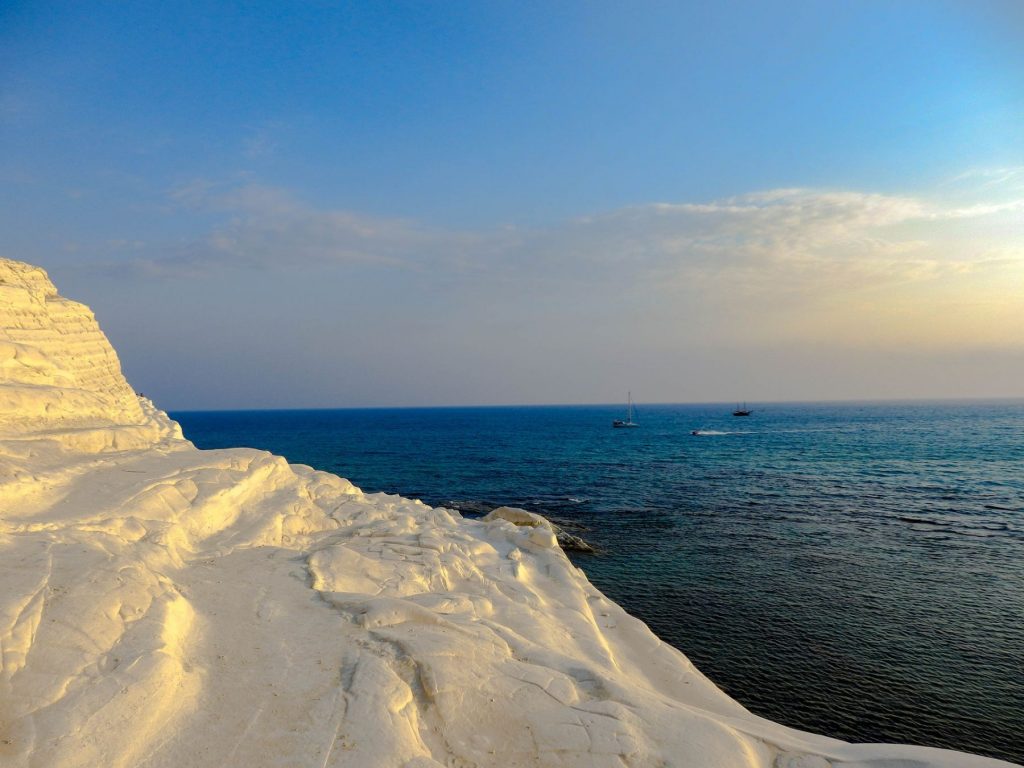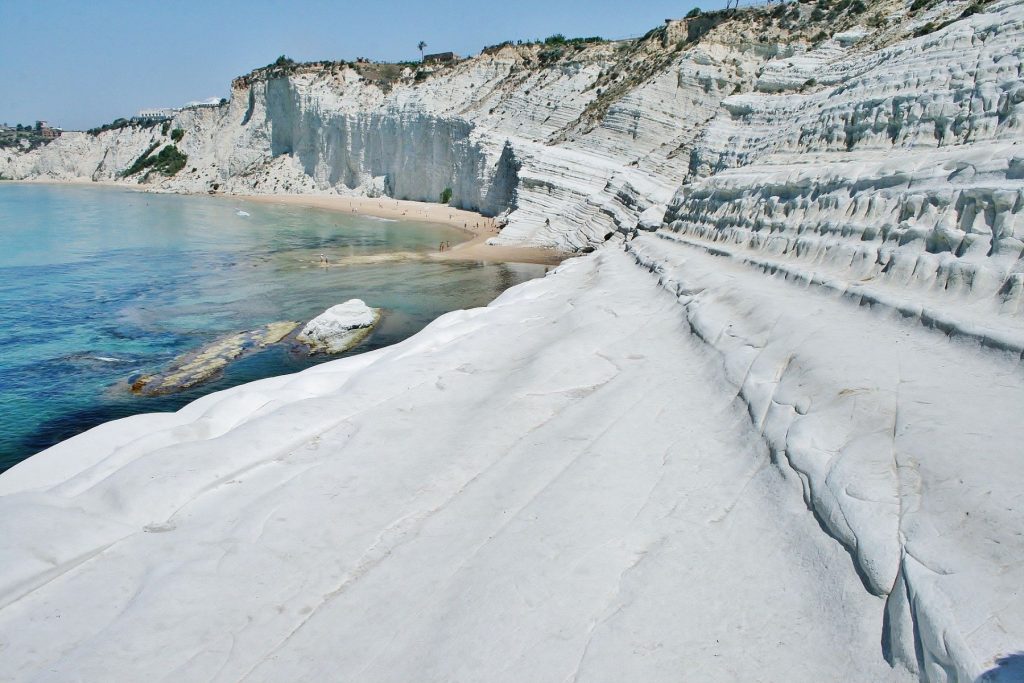The Turkish Steps, or sometimes called the “Stair of the Turks” is translated from the Italian name la Scala dei Turchi and one of the most stunning natural sights in all of Italy. It is also one of the most photographed and “pinned” to travel dream boards by wanderlusts all over the world. We assure you it is just as beautiful as the pictures.

Origins of the Turkish Steps
The Turkish Steps are located along the eastern coastline of the island of Sicily in the Agrigento province. They were named in the 1500s when pirate raids were common along the coastline. The generic term of Saracen was used to refer to anyone coming from the Arab world, or anyone who was Muslim, at the time. Some of the pirates were Turkish but certainly not all of them. The closest city of Realmonte was frequently plundered and the natural geology of the “steps” made for a perfect landing spot and was even protected from the wind.
How Did They Form?
These brilliantly, almost blindingly, white stairs were formed long before the pirates began using them. This unique sedimentary rock called marl consisting of clay and lime gives the formation its amazing color and features. Over millions of years, the waves and the wind have eroded the cliffs giving them the distinctive soft, sloping curves among the most beautiful anywhere in the world.
The soft quartz sand beaches placed up against the brilliant varying hues of the turquoise waters truly makes it an other-worldly sight.
The Scala Today
It’s no wonder that numerous films have been set here and more recently, the Italian detective series Inspector Montalbano which has gained a wide, international fanbase.
As you can imagine, because of their beauty they are a major tourist attraction and destination for beachgoers who use the stairs as sunbeds. The problem is that the rock formation is extremely delicate and subject to further erosion both by pollution and humans.
Interestingly, there has been an ongoing battle about who actually owns them! They were claimed to have been private property but the government had been doing all the maintenance on them. After the Coronavirus lockdown of 2020, the local authorities closed the area until there is a concrete plan about how to protect it. Visitors may be limited in the future.
As of 2007, it has been submitted as an official UNESCO World Heritage Site.
Hopefully, this natural wonder will be around for millions of more years!


